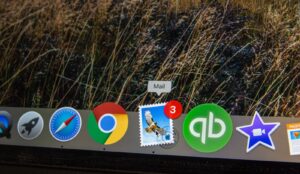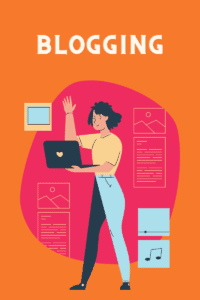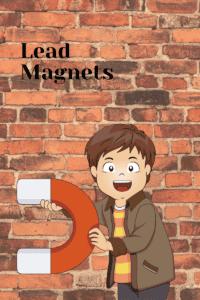In today’s world, the narrative around mental health is undergoing a significant shift. Our society is coming to terms with the importance of mental health, treating it with the same level of care as physical health. As a mental health service provider, how can you extend your reach to those seeking help? You might have all the expertise, but without the right marketing channels, your potential to connect with people remains limited. This article will guide mental health professionals to identify and harness the best marketing channels for their services.
Breaking the Stigma: A Prerequisite 🚧
Firstly, before exploring the various marketing channels, we need to acknowledge the biggest roadblock in mental health advertising – the stigma associated with mental health. The process of admitting to needing help is a tough one for many. As a result, effective marketing in this realm demands a sensitive, empathetic approach aimed at educating, raising awareness, and challenging the stigma. Essentially, your advertising strategy should communicate that mental health is a normal part of human existence, and seeking help is a sign of strength, not weakness. 💪
Digital Marketing: A Powerful Tool 💻
In this digital era, online platforms are indispensable for any advertising strategy. They offer a large audience, measurable metrics, and sophisticated targeting options. But which digital marketing channels are most effective for mental health advertising?
Social Media 📱: Platforms such as Facebook, Instagram, and TikTok offer a unique way to engage with potential clients. They allow you to share educational content, promote mental health awareness, and interact with the audience on a more personal level.
Content Marketing 📚: This involves creating and sharing valuable content to attract, inform, and engage an audience. Resources like blog posts, podcasts, and videos that discuss mental health issues can help establish you as a trusted authority in the field, enhancing your credibility.
Content Marketing 📚: This involves creating and sharing valuable content to attract, inform, and engage an audience. Resources like blog posts, podcasts, and videos that discuss mental health issues can help establish you as a trusted authority in the field, enhancing your credibility.
SEO (Search Engine Optimization) 📈: SEO involves optimizing your website to achieve higher rankings on search engine results pages. A well-executed SEO strategy ensures that those actively seeking mental health services can find you easily. It should be noted that SEO is a long game that can take months to show a positive effect. When hiring an SEO consultant it is vital to ensure they only use “white hate” methods. Anyone who offers to get you to the first page of Google in a short amount of time is either lying or using tactics that can have long term severe consequences to your SEO. Cleaning up those consequences can be expensive or impossible.
Email Marketing 📧: Despite the rise of social media, email remains a potent digital marketing tool. Regular newsletters or personalized messages can keep your audience informed about mental health tips or updates.
Google PPC Ads: A Key Player in Digital Advertising 🎯: Google PPC (Pay-Per-Click) Ads have emerged as a pivotal player in the realm of digital advertising. Leveraging the immense reach and sophistication of Google’s search engine, PPC Ads offer mental health professionals a potent tool to enhance their online visibility, drive traffic to their website, and attract potential clients.
Google Display Ads: Expanding Your Reach Visually 🎨Google Display Ads are a powerful part of your marketing toolbox, offering the unique advantage of visual advertising across the Google Display Network – a collection of over two million websites, videos, and apps where your ads can appear. Unlike PPC ads, which rely on text-based searches, Display Ads leverage appealing images, banners, or multimedia content to attract potential clients and allow for advanced targeting like recent searches and website visits.
Streaming TV Ads: Tapping into the Future of Advertising 📺 As traditional television gives way to its digital counterparts, Streaming TV Ads have emerged as a cutting-edge marketing tool. With the increasing popularity of OTT (Over-the-Top) platforms like Netflix, Pluto, Tubi, Freevee, Hulu, and Amazon Prime, streaming TV ads provide an opportunity for mental health professionals to reach an engaged audience in an immersive environment. Streaming ads have massive penetration at an amazing cost. As of 7/2023 the average CPM (thousand impressions) of a 30 second commercial is $0.02 (two cent). Additionally, Streaming TV offers Zip Code Level Targeting, Demographic Targeting, and measurable results via tracked phone calls and attributed website visits.
Cross-Channel Marketing: The Way Forward 🔄
While each marketing channel has its unique strengths, depending solely on a single channel may not yield the desired results. Therefore, consider a cross-channel marketing strategy that utilizes multiple channels simultaneously. This approach offers multiple points of contact, thereby enhancing the likelihood of engagement and conversion.
As you embark on your mental health advertising journey, remember that your mission goes beyond merely promoting your services. You are contributing to reshape society’s understanding of mental health, helping to break down stigmas, and making it easier for those who need help to reach out. The world needs your services—make sure they find you.
“Good marketing makes the company look smart. Great marketing makes the customer feel smart.” – Joe Chernov
In conclusion, whether it’s through digital channels, traditional media, or a cross-channel marketing approach, it’s crucial to communicate with empathy and authenticity. 🎯 The most effective marketing strategy is one that not only promotes your services but also educates, engages, and resonates with your audience on a human level. Now, the ball is in your court—how will you make your mark in the mental health space? 💡 Let’s find out. Book your free consultation today.








